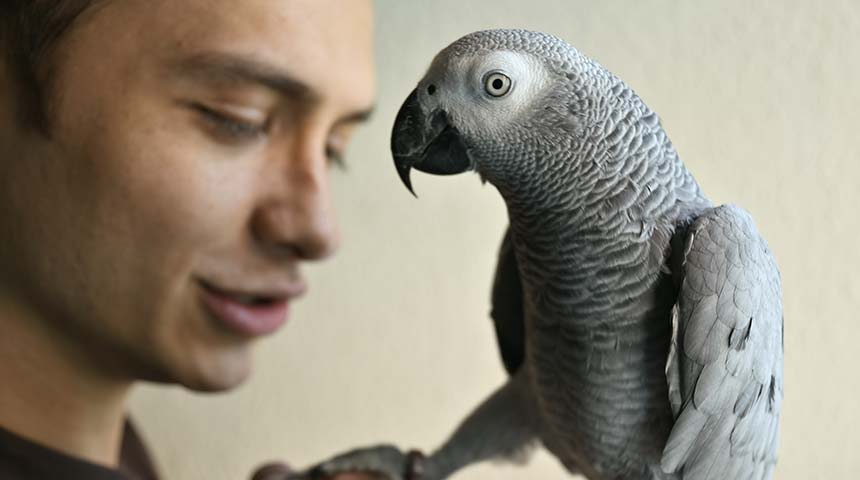
Aspergillosis is a respiratory disease caused by the fungus Aspergillus Fumigatus. African Greys and Amazonians are more susceptible to the disease than other species. This fungus is normally present in small amounts in the animal's environment. Infection usually occurs in individuals with weaker immune systems (malnutrition, stress), or when the bird is exposed to a heavily contaminated environment.
Transmission
The bird becomes infected by inhaling fungus spores present in its environment. Clinical signs include drooping, breathing with the beak open, neck stretched out, wings spread and a gusseting motion with the tail. The bird may simply have difficulty recovering after a short flying exercise, for example. Some stop eating, others are simply more temperamental in their appetite. The bird may also stop talking or singing, or show a change in its voice (has been talking or singing "strangely" recently).
Diagnosis
There are several tests available to detect the presence of infection in the bird and they are all essential to obtain the most accurate information about its infection status. A blood test will detect the presence of infection in a non-specific way, then detect the presence of antibodies or agent-specific DNA. Detection of this agent is rather difficult, as it tends to accumulate in granulomas in the bird's air sacs very quickly. It is therefore present in the blood in small amounts only and for a short period of time, at the beginning of the infection.
Antibodies, on the other hand, will appear in the blood only 2 weeks after contamination, so it's possible that they won't be present by the time clinical signs appear and screening is carried out. Thus, blood tests are limited in their ability to inform us about the true presence of the agent in the animal. X-rays can detect the presence of lesions compatible with aspergillosis in the lungs and air sacs. When radiographic signs are detected, an endoscopy is worthwhile. This is the most sensitive test and also offers the possibility of treating lesions to the respiratory system directly. Endoscopy involves entering a camera into your bird's airways through an air bag. In this way, granulomas can be seen and the antifungal agent can be injected directly into the airway, thus allowing the disease to be cured in the most effective way.
Treatment
As mentioned above, the most effective treatment is to inject the antifungal agent directly into the granulomas under endoscopy, when the test can be performed. Alternatively, the antifungal agent can be administered by nebulization, i.e., by concentrating its quantity in the air breathed by the bird placed in an incubator. At least treatments are required during the first week of treatment. Some improvement can be observed from the first treatment in certain patients. Oral treatment is also initiated in conjunction with the nebulization treatment, for up to 6 months. Treating aspergillosis is not simple and requires a lot of time and effort!
However, the underlying cause of this infection should be investigated! Animals affected by aspergillosis often have a weakened immune system; it's important to find the underlying cause to prevent recurrences. Stress, malnutrition, lack of sleep, cold ambient temperatures are all examples of causes leading to the disease. It is essential to find them and then correct them quickly to ensure that your bird is in good health!

